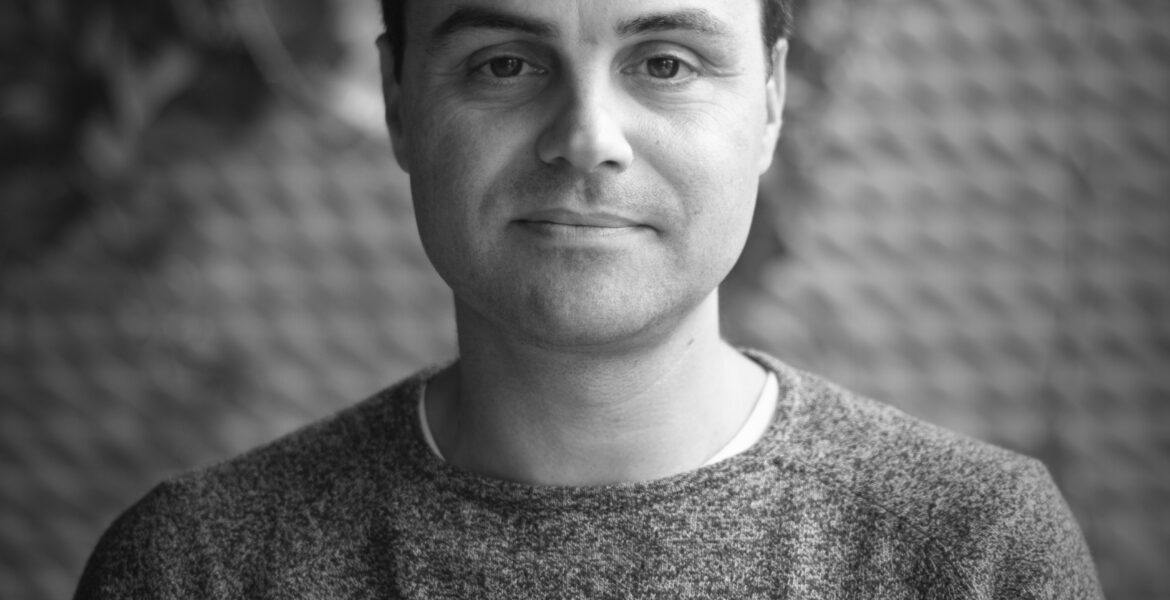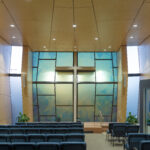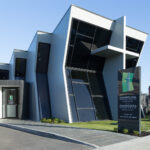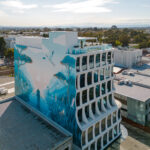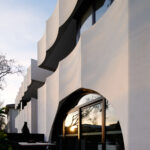Billy Kavellaris, the visionary architect hailing from Australia, stands at the helm of KUD Architecture and has left an indelible mark on Melbourne's ever-evolving skyline. His stunning creation, an exquisitely adorned apartment building, stands as a testament to his creative genius and redefines modern living. Kavellaris aptly describes his masterpiece as "contemporary urban baroque," a fusion of opulence and innovation that seamlessly integrates with the city's dynamic landscape. His design transcends conventional boundaries, boasting intricate details, ornate facades, and a deep commitment to harmonizing the avant-garde with historical influences.
As the Managing Director, Owner, and Founder of Kavellaris Urban Design, Billy Kavellaris has taken the architectural world by storm, pushing the boundaries of expression to redefine urban living in Melbourne. With a background as a Tutor at the University of Melbourne and his education at RMIT University, Kavellaris has proven himself as a trailblazing force in the world of contemporary architecture.

Could you share the genesis story of Kavellaris Urban Design (KUD)? And what inspired you to establish this architectural practice back in 2002?
When I was 15 years old, I visited my cousin's house who was studying mechanical engineering at the time. He had a drawing board on his desk and when I saw it, I was captivated by all the technical equipment and the drawings. I started to inquire about technical drawing and architecture and I knew at this point I wanted to be an architect. Two weeks later my parents bought me my first drawing board which ultimately led me to where I am today.
Your architectural philosophy emphasises the translation of ideas into a distinct architectural language. How do you approach the process of turning conceptual ideas into tangible, built spaces?
Architecture is about storytelling. Just like how letters are used in words and words are used in sentences to create language, they are the building blocks of how we convey critical concepts and ideas. The strategic arrangement of materials is like letters and words that convey my architectural language. I am not the strong opinion that architecture is an intellectual pursuit where buildings are a by-product and the discourse is what underpins the essence of design.
Environmental consciousness is a cornerstone of your practice's philosophy. Could you elaborate on how conscientious environmental design interventions play a crucial role in the creation of intelligent and unique architecture?
This is a question that is often posed to me. Environmentally conscientious design is one aspect of intelligent design and is not in a category of its own. The word ‘architect’ represents a practitioner that should embody and incorporate all aspects of design. Sound planning, the use of light, the assembly of materials, and ensuring that the building responds to its environment conscientiously are just some of the important elements for an Architect to consider.
Buildings are an extension to the natural environment, and as such they should coexist sustainably within our environment. All my projects primarily incorporate passive means of creating sustainable buildings as a primary principle. I then explore how technology can be integrated to reduce the carbon footprint and produce an environmentally conscientious design outcome. I am very optimistic that technology moving into the future not only will make our buildings carbon neutral, but also the process of making our building materials emission-free.
The JARtB house is a fascinating embodiment of your family's initials and art. How did the concept for the JARtB house come about, how does it reflect the identity and values of the Kavellaris family and how does it contribute to the Melbourne architectural landscape?
JARtB House is the manifestation of our family’s values, experiences, and love for art that is translated into architecture. The name of the house is an anagram of our family’s initials Jorja, Alexia, Rosalba, and Billy with the ‘t’ spelling ‘art’ with the name. The building is a piece of urban art, that contains art. The works in the house have been collected, created, and commissioned over a twenty-five-year period anyone wanted to live in and amongst the art in every space of the house, blurring the boundaries between home and gallery.
Historically speaking, Australia is a very young country that has been founded on multicultural immigration throughout the last 250 years. As a result, our capital cities, like Melbourne have evolved to be a melting pot of cosmopolitan culture that is constantly exploring new architectural expressions that reflect this rich diversity. Melbourne has always been at the forefront of innovation and JARtB House seeks to contribute to this built environment.
KUD has gained both local and international recognition. Could you share a project that was particularly challenging or innovative, and how it reflects the essence of Kavellaris Urban Design's approach to architecture?
Victoria Square is the first stage of a 6 tower Master Plan and a low-rise context provided us with an opportunity to design a master plan that would be visually prominent from both the easterly and westerly approaches to the site which would inform the characteristics of the towers.
Our objective was to introduce typical residential programs in the suburban context and try to incorporate them into an urban tower typology. Health /well-being and lifestyle-orientated facilities were key priorities for the project. The site footprint for stages 1 and 2 is 100 × 100 meters which provided us with exact dimensions for an Olympic-sized running track. The track traverses along the perimeter of the podium, enabling us to connect other fitness-orientated programs such as indoor and outdoor gymnasiums, an indoor swimming pool, and a landscaped podium space that has been designed to capture the various experiences of suburban parks and public spaces; incorporating park spaces, barbeque areas, an urban chess theatre and public seating areas.
Architecture often evolves with cultural and technological shifts. How do you navigate the balance between timeless design principles and incorporating contemporary trends in your architectural projects?
This is a very interesting and important question for architects. Architects mustn’t follow trends and fashions because they are transient in nature and are perpetually being re-evaluated with time. Buildings, by contrast, are designed to stand throughout the many generations and as a result, decision-making needs to be specific and critical to any given project. Many buildings around the world have stood the test of time and in my view follow these basic principles.
Residential and commercial projects are both part of KUD's portfolio. How do you approach these two distinct project types, and are there any underlying design principles that are consistent across them?
Every typology of architecture has its specific requirements and objectives. Our Residential architecture is very personal and Bespoke to a given client and their site. The requirements are underpinned by an emotional and aspirational brief relating to a specific site and budget. Well, our Commercial buildings in most cases seek to create unique design outcomes for a larger group of people or businesses. Ultimately the thing that they both have in common is that our clients are always seeking individual and innovative design outcomes.
Architectural visualisation and representation have transformed in the digital age. How has technology influenced your design process and the way you communicate your ideas to clients and the public?
Technology is a tool that is critical to the visual communication and narration of our buildings. It is important to distinguish that it is a ‘design tool’ and not an architecture or driver of design ideas. It is an integral part of our studio and it enables us to clearly articulate complex design ideas in a manner that was not possible in the past.
For you, what does "architecture" represent? How has your perspective on architecture evolved over the years, and what ambitions do you have for the future of Kavellaris Urban Design?
Architecture is a form of Art. Like all other art forms, architecture is about narrating ideas that are underpinned by culture. All art forms be it painting, sculpture, literature film, seek to chronicle a story by creating language and syntax through their respective medium. In my case, buildings are my medium. Every commission is unique and the fundamental elements of the design always begin with the client, context, and brief. Understanding your client and place is key to intervening in the built environment. As such I see every project as a unique design response for that piece of architecture.
What do you dream for your family and how do you want to change the world to?
We live in a time and age where information and technology have a profound influence on our lives with ideas and values that are constantly shifting at such a rapid speed that they are obsolete before they are created. The aspirations for my family and the future are rooted in my cultural Hellenic heritage that embraces timeless ideologies and values that date back 3000 years, Filoxenia means a friend to all and respect your role as a citizen, and Filotimo is an attitude toward fellow humans and humanity at large. I often teach my children that these ancient values can solve current and future problems.

